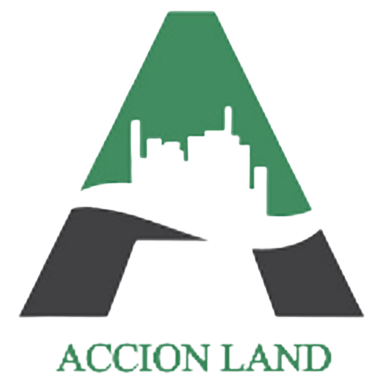Climate Risk Management
As climate change has increasingly become a focus for investors and regulators, financial institutions have started to assess the financial impacts of climate change on their businesses. These assessments, often strategic in nature, now need to expand to include quantitative risk analyses, integrated into existing risk management frameworks.
We use Datasets from environmental, to infrastructure to socio-economic. Our focus on cartography and how maps can be used to convey hazard, risk and uncertainty plays an important role on how we see risk & resilience. Our Spatial lab adds value for determining innovative disasters loss assessment and developing resilience.
We are very flexible and offer clients three main options for working with us:
AccionLAND uses the most up-to-date mapping techniques data collection & analysis, we produce Climate Impact Study Reports (CISR) for our clients. This summarises the main climate risks in their area, and the likelihood of them developing and financially impacting our client’s business. We can tell clients how often their premises or the surrounding area is likely to be impacted by climate risks , the likely severity, the type of risks that is likely to occur, and which parts of their property are at the greatest risk. Having this detailed information means that our clients can put the most effective Climate risk management plan possible in place.
We can also tell businesses how often they may be at risk of closure as a result of a business interruption review. Our service includes a financial risk assessment due to climate change, which gives clients an indication of the financial implications of such events and options to address this
This includes a Climate Impact Study Reports (CISR) report to assess a company’s resilience using a number of predicted Climate risk impact scenarios. The detailed report takes into account site-specific information such as vital access points and the location of any valuable assets including an on-site analysis. This helps us to accurately predict the impact on business continuity and identify any mitigating infrastructure or other modifications that the client could introduce to protect themselves against climate risks.
The business risk financial assessment included in this scope of work will give an analysis of any financial impacts on your business. This will include information such as the daily closure costs and the annual expected costs as a result of delays or closures due to Climate risks. Whether an off-site access road is blocked for two hours or major flooding occurs on your premises, we have the expertise to predict how long a flood is likely to impact productivity, and how much it will cost you.
If the Detailed Climate change Impact report outlined in Option 2 indicates that there is a significant risk of climate change to a client’s business or community, we are able to offer a wide range of risk or financing solutions in order to manage these threats.
Alternative risk and financing solutions can provide organizations or communities with appropriate protection in the event of climate change threats. We have a number of solutions available, ranging from traditional to alternative risk management strategies.
We offer engineering solutions for clients found to have low business resilience in the Option 2 report. In these instances, appropriate solutions provided by our partners can dramatically reduce the potential impact of climate change risks.
Crisis Management and Emergency Response
Our vetted consultants, business partners and in-house leadership allow us to quickly dispatch expert, on-site assistance for any emergency.
Out of nowhere, a crisis strikes. These events may include natural disasters, business interruptions, criminal or malfeasance perpetrated by individuals, or violent political activity.
Do your business leaders and employees know how to react to an active shooter situation, political or social unrest, a medical emergency or a hazmat incident? We have the resources and ability to quickly dispatch expert, on-site assistance for any emergency.
With AccionLAND, business partners and in-house leadership, we can support your organizations on a global basis. The diverse skill sets of our experts and one-stop shop capability to promptly respond to clients’ needs allow us to deliver the best crisis management and emergency response support internationally.
Organize, draft and implement emergency preparedness and emergency action plans that reflect the crisis management policies of your organization
Emergency planning introduces methods for identifying and assessing hazards and vulnerabilities that require crisis management and an emergency response plan.
Our process develops a standard methodology for organizing, drafting and implementing emergency preparedness and emergency action plans and related procedures. These designate how response teams will respond and document actions related to specific incidents.
These comprehensive plans also address decision authorities, an emergency incident manager and designated back-up, specific protocols for dealing with scenarios most likely to occur in crisis situations, coordination with security and business recovery elements, and notification/communication mechanisms.
A Hazard Risk and Vulnerability Analysis (HRVA) is a critical part of every emergency program It is designed specifically for local authorities to prepare emergency plans that reflect the local authority’s assessment of the relative risk of occurrence and the potential impact on people and property of the emergencies or disasters that could affect all or any part of the jurisdictional area for which the local authority has responsibility.
The HRVA is an all-hazards risk assessment that helps guide decisions to mitigate, prepare, respond and recover from hazards that pose a risk to the region. The results from the HRVA are the cornerstones of the planning process and will be used to develop planning priorities and help make risk-based choices to address vulnerabilities, mitigate hazards, and prepare for response and recovery from disasters. Using risk scores as a guide, the prioritization of hazards can begin.
GIS in Public Health Sector In today’s time, prenatal care is considered to be one of the most important aspects in preventive medicines. The objective of prenatal care is to attain a safe pregnancy leading to delivery of a healthy new born baby. It plays an important role when it comes to health of mothers, fetus and the children. A…
The most amazing collections of drone phototgraphy: nature, landscapes, and of course the mountains of Portland.
Beyond Conventional Salt Farming Salt – a run-of-the-mill ingredient!! The production of this mundane ingredient of every kitchen has a long history of over 5000 years. The country even witnessed a massive movement popularly known as “Salt March” to disobey the Britishers’ lucrative control on salt farming and selling. Ever Since the conventional process of salt production is being followed…

